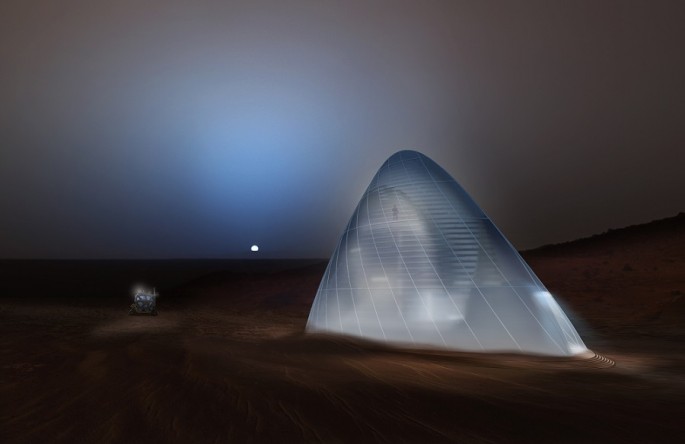Just last May, NASA revealed a competition called 3-D Printed Habitat Challenge to design and build a 3D printed habitat for astronauts with a US $2.25 million grand prize to boot, and now, the space agency is already in the process of awarding the teams of a total of $40,000 during the first stage of the challenge.
The first place winner receiving an award of $25,000, goes to the "Mars Ice House" which is a multi layered dome shaped, shell of ice that is built around a habitat where a garden is protected inside. NASA explains how the concept and design of future space exploration habitats in alien worlds, most specifically on Mars should approach a strategy that would lead to water or near a core resource where the Ice House extends that concept to construction.
Officials also explain that the Ice House serves as a beacon of light of human presence on Martian surface, where the design literally aims to bring light from the interior to communicate with visual connections to the landscape and beyond, and at the same time, allowing the human mind and body to thrive in that environment.
The Ice House is designed by the Team Space Exploration Architecture and Clouds Architecture Office where the design allows natural light to enter into the habitat where it can also use the ability of the water-ice to protect the habitat like a shield from harmful radiation.
The project team revealed that the 3D printed ice is comprised of the interior appearing to be hollowed out spaces to form walls and divisions of the habitat. The rooms appear curvaceous which makes for an illusion of cycloramic space that can change the perception of boundlessness, in short, making a small space seem rather large.
The team also reveals how the additional lighting of the habitat also included color therapy with alternating lights that are made using robotic printing on the surface in order to create a "Fresnel lens" effect, that can refract and concentrate light within the interior surface of this dome habitat.
To date, NASA is spending $10,000 just place one pound of payload in lower Earth orbit which further makes manned missions to Mars and establishing human colonies there impossible due to feasibility issues. This competition which is also part of NASA's Centennial Challenges Program aims to somehow alleviate this problem, as building a 3D printer that can work reliably well in an extreme environment such as Mars is yet another challenge to be faced.



























